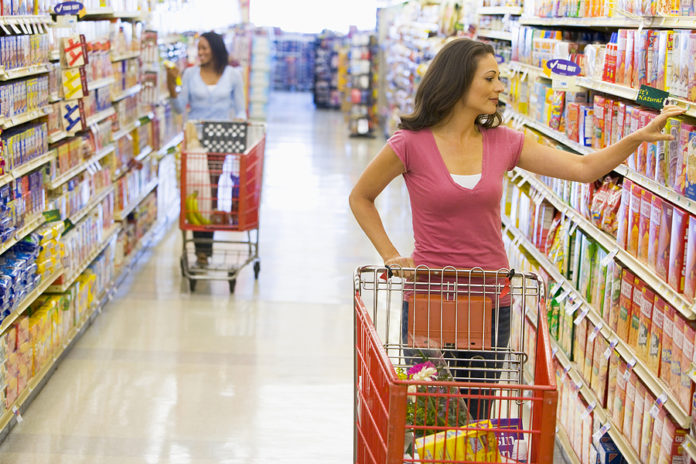
By Vamsi Valluri and Sunder Balakrishnan of LatentView Analytics
In mid-October 2022, North American grocery giants Kroger and Albertsons announced their intent to merge. If successful, the move will mark one of the largest grocery deals in history, creating an opportunity for the combined brand to compete with Walmart—a grocery retailer that has a physical presence within 10 miles of 90% of the U.S. population—Amazon’s at-home delivery, and Costco.
For Kroger and Albertsons, the benefits of this consolidation are clear. Across industries, consumers are seeking out a personalized shopping experience, even at the grocery store. In an already low-margin industry, it has been difficult for the second and fourth largest grocers by market share (Kroger and Albertsons, respectively) to build sustainable and competitive grocery delivery programs.
As the grocery industry continues to become increasingly fulfillment oriented, the consolidation of Kroger and Albertsons’ business teams will be primed to accommodate this shift in consumer behavior. Furthermore, the crossover in geographies created if this merger comes to fruition will help both players iron out the logistics and bring down the overhead of orchestrating direct-to-consumer delivery.
Morphing these two brands into one grocery goliath will put pressure on Walmart to advance its current offerings, likely to benefit consumers in the end.
Off to a bumpy start
The Kroger-Albertsons merger plan has seen a few hiccups. Both entities have storefronts scattered across the country, but political leaders in some localities have voiced their concerns about potential price gouging in places where those storefronts overlap. For example, Albertsons and Ralphs (a Kroger subsidiary) compete for customers in California, and Carrs (Albertsons) and Fred Meyer (Kroger) are the two dominant grocery chains in Alaska. To mitigate drastic competition reduction, Kroger has proposed spinning off up to 375 stores under a separate brand.
On the other hand, scale, buying, and assortment of inventory are all augmented in a merger like this one where two prevalent industry players come together. A merger of this magnitude will leave a lasting impression on the industry and change the way consumers interact with their hometown grocers. In recent history, only one brand move has created similar waves in the space—Amazon’s 2017 acquisition of Whole Foods. Done right, the Kroger and Albertsons partnership could mean similar and significant improvements in consumer experience.
As the new entity gets its ducks in a row, there is a unique opportunity for Kroger and Albertsons’ leaders to capitalize on the learnings of previous mergers and acquisitions and position themselves as a customer ally amid criticism. The key to success for Kroger and Albertsons now is how they communicate their intent to their customers and employees and lean into the benefits this coalition brings.
Potential opportunities to drive better CX
There are two customer-centric opportunities created as a result of this merger that Kroger and Albertsons should take advantage of to build out a competitive customer-first, fulfillment-oriented business model: smart personalization, and intelligent fulfillment.
Smart personalization
For decades, grocery brands focused on scaled reach and mass marketing to engage and retain customers. They relied heavily on “milk, bread, and eggs” loyalty. However, increasingly discerning consumer choices—including emerging preferences for sustainability, transparency, organics, and value savings—along with ubiquitous, omnichannel competition, have heralded a new era where former loyalties can no longer be taken for granted.
A strong recommendation engine can renew foregone brand loyalty. Grocery chains can help to drive future purchases by prompting the purchase of frequently recurring or last purchase items—through push notifications or custom email campaigns. Furthermore, assorted recommendations can introduce customers to local favorites, samplers for the experimental shopper, “complete the recipe” suggestions for DIY cooks, and more.
To take this to the next level, data should be used to simulate a value-based pricing experience by crafting smart promotions and loyalty options to drive retention and maximize customer lifetime value.
Key levers to drive smart personalization and build customer loyalty include:
- Rewards—Both Kroger and Albertsons have been praised for their stand-out loyalty programs, which according to 2020 data from Kroger allows the brand to capture 96% of purchasing decisions. Combined with new data from Albertson’s top-ranking loyalty program, the joint brand has the resources necessary to create the leading personalized shopping experience—should they use the data to their advantage.
- Subscription economy—It is critical for the joint brand to identify the core reason that current customers are subscribed to Kroger and Albertsons individually, and what value the merged entity can offer to consumers as an incentive to stay subscribed. Is it savings on essential purchases like fuel or subscriber-only discounts on regularly purchased items?
- Digital marketing—On the retail media business side, the combination of already-established Kroger Precision Marketing and the Albertsons Media Collective would serve over 85 million households, providing cross-country reach, an extensive store of transactional data, and an impactful advertising opportunity for other CPG brands through the sale of online banner ads.
Intelligent fulfillment
Intelligent fulfillment is the other half of the successful merger puzzle. In our modern, connected world, demand forecasting, warehousing, and the physical network need to be reimagined to meet new customer promises.
The grocery network of the future will have a rationalized store fleet in which select storefronts are converted to “dark stores,” or fulfillment hubs created based upon factors like demand, proximity, route optimization, storage space, and zonal regulations.
Reach is everything in the turf war for retail supremacy. Amazon’s acquisition of Whole Foods gave Amazon access to Whole Foods’ network of suppliers and distributors—driving down prices and putting pressure on competitors. With 4,996 stores, 66 distribution centers, 52 manufacturing plants, 2,015 fuel centers and more than 710,000 associates across 48 states and the District of Columbia, two out of every three households in the US could be serviced by the merged Kroger-Albertsons entity.
To achieve an evolved intelligent fulfillment future through this merger, the following should be considered:
- Changing consumer demand—Evolving buying journeys and situational changes that impact purchasing decisions, like job loss and rising inflation rates, married with the diverse range of products grocery distributors provide in a post-COVID world, have presented a challenge for grocers. To effectively operate in the changing economy, they look to answer “What products and how much of each are consumers likely to buy?” At the same time, previously dependable methods of forecasting consumer demand—purely predicated on past behavior—have come up severely short with variance levels reaching more than 40%. There is an immediate need to predict drivers of demand by sub-category and bring it into the forecasting equation so that inventory can be stocked appropriately.
- Supplier intelligence & efficiency—Kroger, with 1600 suppliers, and Albertsons, with nearly 1000 suppliers, have a strong infrastructure to meet the various needs of several consumer segments. But with more than 80% overlap in product categories based on an assessment of their websites, there is a significant opportunity for the combined entity to rationalize product breadth and depth, consolidate merchandising and buying, drive greater economies of scale in purchasing, and cross-leverage data to improve supply availability, on-time performance, and product quality.
- Supply chain network—Instead of shuttering stores in congested areas, the pair should make use of existing storefronts by converting them to micro-fulfillment centers or “dark stores.” Made popular by the convenience delivery brand GoPuff, dark stores increase the bandwidth for timely direct-to-consumer delivery. The move would position Kroger to compete against Amazon, which offers Prime members a 2-hour guaranteed delivery for $9.99.
- Supply chain visibility—Augmented inventory and an expanded regional presence, among other things, require a more thoughtful supply chain strategy. Kroger and Albertsons should be considering how they use the data at hand to bring total visibility to the supply chain. As inflation worsens, what products will be “need to have” and “nice to have” in 2023 and beyond? Where should they be stocked? Managing inventory to proactively meet customer needs could be a key differentiating factor in the Kroger-Albertsons partnership.
Should this merger successfully endure FTC scrutiny, the combined brand will be well-positioned to strengthen its initiatives across the value chain. Ultimately, the new data available is of no use to either brand without a concrete plan for its utilization. Kroger and Albertsons should take this time to think through how they will use their newfound data to bring total visibility to their operations in order to create a customer-centric, grocery shopping experience.
 Vamsi Valluri is a strategist with over 13 years of experience across sectors, functions, and cultures. He is passionate about augmenting the art and science of retail with customer data insights. Vamsi has leadership experience in customer insights and retail and omni-channel analytics. At LatentView, Vamsi leads the Retail industry practice, overseeing client engagements, developing solution accelerators, and shaping thought leadership.
Vamsi Valluri is a strategist with over 13 years of experience across sectors, functions, and cultures. He is passionate about augmenting the art and science of retail with customer data insights. Vamsi has leadership experience in customer insights and retail and omni-channel analytics. At LatentView, Vamsi leads the Retail industry practice, overseeing client engagements, developing solution accelerators, and shaping thought leadership.
 Sunder Balakrishnan is a Supply Chain Analytics Leader at LatentView Analytics. He is focused on solving the most pressing value chain problems in CPG, Retail, Manufacturing, Tech, and E-Commerce industries using the power of analytics and AI.
Sunder Balakrishnan is a Supply Chain Analytics Leader at LatentView Analytics. He is focused on solving the most pressing value chain problems in CPG, Retail, Manufacturing, Tech, and E-Commerce industries using the power of analytics and AI.








